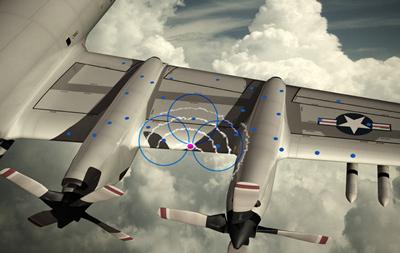Research project: Prediction of ultrasonic wave propagation in aircraft structures for crack monitoring - Dormant
Ultrasonic waves have long since been used to detect flaws in structures. One such technique applicable to cracks uses ultrasonic sensors to ‘listen’ for high frequency (~100kHz) acoustic emissions which are generated when micro-cracks grow. We are developing computer models to simulate the signals that would arrive at sensors positioned remotely from a crack as a result of wave propagation in the structure. Our work is focussing on critical loadbearing substructures of aircraft, such as wing spars, in which many complicated waves can co-exist. Our intention is to use these models to help quantify the accuracy and robustness of a commercially available monitoring system developed by Ultra Electronics.


